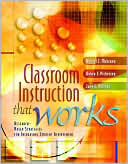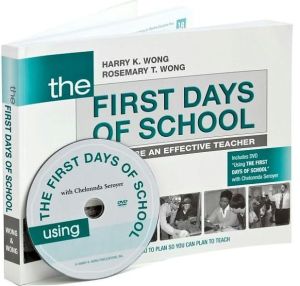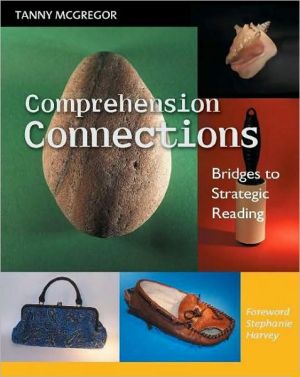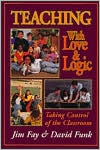Breaking (into) the Circle: Group Work for Change in the English Classroom
This book offers tested methods for utilizing groups in the English classroom, methods that won't lead to anarchy but will lead to a classroom where students cooperate in the pursuit of common goals.
Search in google:
Every student loves to hear the teacher say, "Let's break into groups" because group discussions and activities can quickly turn into a digressive social hour. Yet group work can be a powerful strategy for promoting literacy, inquiry, and diversity among students of any age. Breaking (into) the Circle offers tested methods for utilizing groups in the English classroom, methods that won't lead to anarchy but will lead to a classroom where students cooperate in the pursuit of common goals, deepening their literacy and learning skills while gaining valuable experience with group dynamics. Hephzibah Roskelly examines groups inside and out, using both theory and ethnography to document why groups succeed and how to remedy them when they are failing. You will watch groups work together to find a voice, resolve conflicts, clarify motives, and deepen understanding. Meanwhile Roskelly's pragmatic advice about monitoring and mentoring groups will help you maximize their learning opportunities. There are chapters devoted to teaching writing with groups, teaching literature with groups, and one devoted to issues of race, ethnicity, and gender that may arise inside groups. Roskelly firmly believes that group work can help you foster acceptance of diversity in your classroom, and she demonstrates how this can happen. Finally, in a special feature that every teacher will find useful, she offers a Q & A of the questions that teachers have most frequently asked her about group work Practical, research-based, and smart, Breaking (into) the Circle will guide you in successfully introducing satisfying group work in your classroom or assist you in redesigning group work to best meet your students' needs and your own curriculum agendas. With Hephzibah Roskelly's help, you'll discover that the next time you say, "Let's break into groups," the discourse inside them will go far beyond social digression. VOYA This text deals with the problems and misunderstandings associated with group work. Grounded in the theoretical work of Russian psychologist Lev Vygotsky, the book makes a strong case for including teachers in the collaborative circle of learning and for finding ways for groups to foster the trust that leads to engaged learning. Roskelly does not provide a "how-to" book, although it does contain student examples and illustrations as it goes along and one chapter that gives teachers a starting point for making better use of group work. The chapter contains advice for structuring groups, with responses to questions teachers often have about them. A semiethnographic study with a palpable philosophical bent, this text acknowledges differences in the classroom and suggests that those differences can be used to invent new ways of working together for change; in particular, there is a chapter devoted to gender, race, and ethnicity. As the title indicates, Roskelly deals with groups within the context of the writing and literature classroom, although her ideas can easily carry over into other group disciplines. She looks at how groups succeed as well as why they fail and offers advice to remedy those that struggle. Because the material is research based, it reads more like a textbook than it does a conversation about the topic. Although the writing is fluent and thoughtful, the text itself is one that might work best in large discussion, particularly in teacher teams that are wrestling with the issue of the power of groups. Index. Illus. Biblio. 2003, Heinemann/Boynton-Cook, 162p, O'Quinn
ForewordviiAcknowledgmentsxIntroductionxiChapter 1Group Work Matters1Chapter 2How Learning Happens26Chapter 3The Circle Breaks Why Groups Fail and Why They Succeed56Chapter 4Race and Gender The Role of Groups for Confronting Difference94Chapter 5Blueprint for Action Making Groups Work129Conclusion151Works Cited153Index159
\ VOYAThis text deals with the problems and misunderstandings associated with group work. Grounded in the theoretical work of Russian psychologist Lev Vygotsky, the book makes a strong case for including teachers in the collaborative circle of learning and for finding ways for groups to foster the trust that leads to engaged learning. Roskelly does not provide a "how-to" book, although it does contain student examples and illustrations as it goes along and one chapter that gives teachers a starting point for making better use of group work. The chapter contains advice for structuring groups, with responses to questions teachers often have about them. A semiethnographic study with a palpable philosophical bent, this text acknowledges differences in the classroom and suggests that those differences can be used to invent new ways of working together for change; in particular, there is a chapter devoted to gender, race, and ethnicity. As the title indicates, Roskelly deals with groups within the context of the writing and literature classroom, although her ideas can easily carry over into other group disciplines. She looks at how groups succeed as well as why they fail and offers advice to remedy those that struggle. Because the material is research based, it reads more like a textbook than it does a conversation about the topic. Although the writing is fluent and thoughtful, the text itself is one that might work best in large discussion, particularly in teacher teams that are wrestling with the issue of the power of groups. Index. Illus. Biblio. 2003, Heinemann/Boynton-Cook, 162p, O'Quinn\ \








